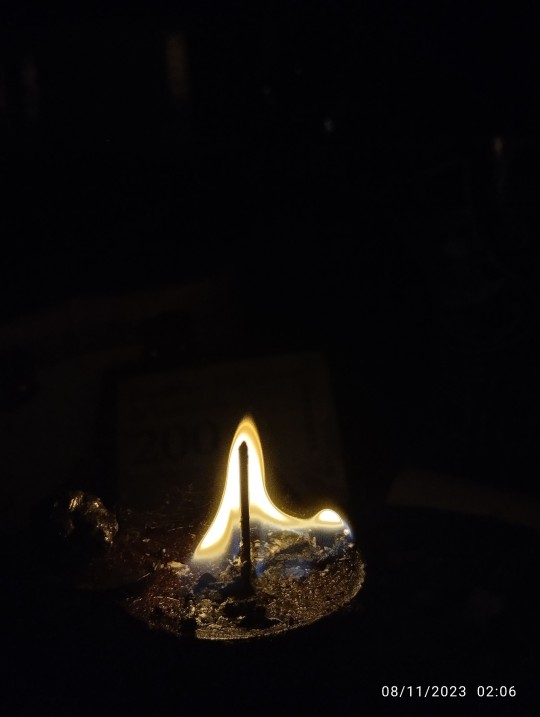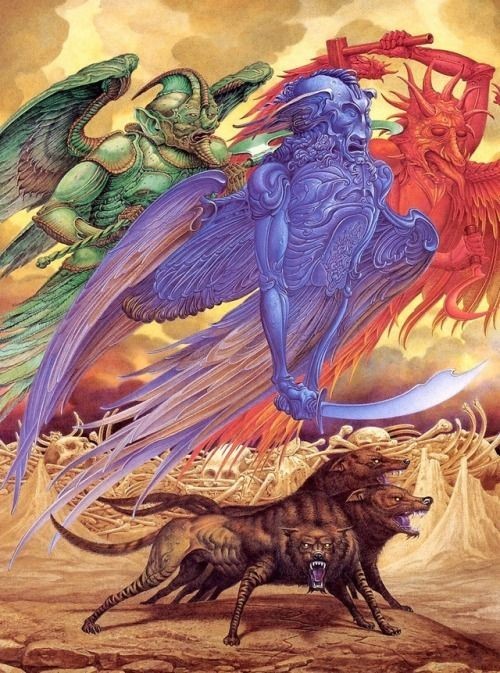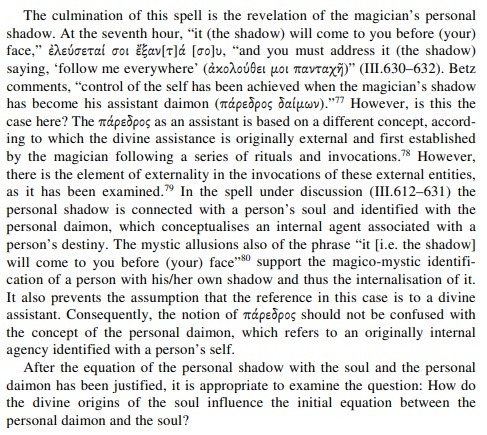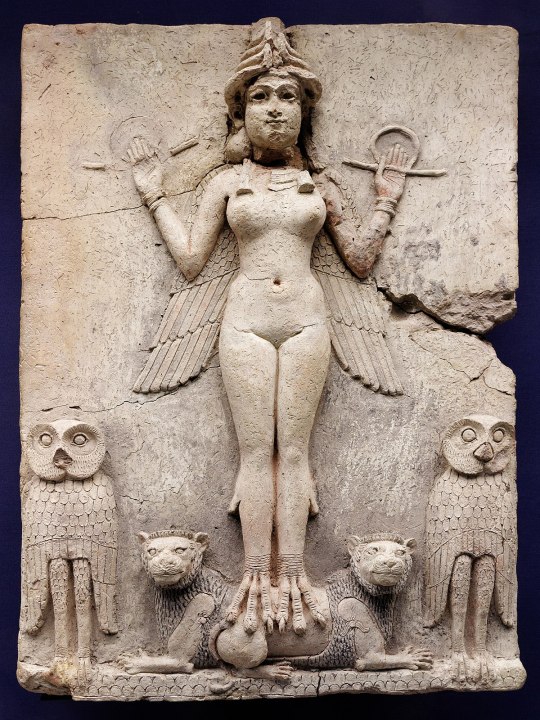#daimons
Text




I wanted to do a public praise and thanks-giving post to Duchess Bune ✨
She really helped me to solve my financial problems, to present myself as a more charming and persuading individual, and she accompanied me on the buying process of our new home. I must really thank Her for her help
I really reccomend working with Bune if you need to improve yourselves at all levels. But you must work hard and persevere
#brujas of tumblr#witchywoman#goetia#goetic demons#duchess bune#bune#solomonic magic#evocation#invocation#demonology#demonolatry#satanic magic#goetia demon#bune goetia#daimon#daimons#thank you#thanksgiving#deity devotion#demon devotion#rituales#magic ritual#paganblr#cosas de brujas
22 notes
·
View notes
Text

Osouji or Scar

Taiyan or Ironder

Nekonneru or Soiya

Die-Heart or Cenicienta
7 notes
·
View notes
Text

Jᴜᴅsᴏɴ Hᴜss • Mʏsᴛɪᴄ Vɪᴏʟᴇɴᴄᴇ ᴏғ ᴛʜᴇ Asᴛʀᴀʟ Fʟᴀᴍᴇ
9 notes
·
View notes
Text
The role of Helios in PGM III gets interesting once you understand the "shadow" that the magician wants to control as the soul. By invoking Helios, the magician wants to see the shadow that is the soul that is the personal daimon, and thus control their own self.
For more details, Eleni Pachoumi elaborates this much in her book The Concepts of the Divine in the Greek Magical Papyri, specifically when discussing PGM III. 612-32:


The magician thus strives to contact the shadow that is the soul that is the daimon, the part of themselves that is divine and also of the other side, in the underworld, or of the dead, in order that they might then control their own soul or self. With the help of the power of Helios, the magician aims to acheive a mystical identification with their own shadow.
10 notes
·
View notes
Text


Does remind me of the Burney Relief...
9 notes
·
View notes
Text
Collective Channeled Messages from Anubis
Be illuminated to a higher perspective. When it comes to tradition, marriage, religion and the occult. Become more understanding and compassionate when it comes to our brethren as well. How is it that us gods and goddess's of death and renewal, of The Underworld, receive praise and respect from most but the demonic entities do not.
Too many forget they were once Ancient Gods themselves and still are. We are the same.
Their needs to be illumination and love to destroy the gateways that block us & you from the other side.
To realize that all magic has an purpose & a strength. As long as you are focused but don't take everything so seriously. You do not need to sacrifice to protect yourselves & be reduced to an organization that promises love and protection in return only to keep repeating cycles of the past.
Release that to see the beauty & peace without a strategy or control over your temptations.
Have the confidence to create the abundance to inquire about who is in leadership. Expand & be content with the redemption of others who have plenty. (I think he's talking about the rich and those in power here.)
Use your inventiveness to discover your true dedication to your faith. Does it give you pleasure & self esteem or does it trick you into believing it is authentic only to bring war & chaos, does it manipulate you into believing the same of demonkind?
Instead of bringing healing through your own personal power & equality of justice for creation.
Have trust in your skills and take pleasure in taking action towards a new beginning. That which brings prosperity & compassion with the power of new cycles.
That which feels like home. Supportive, inspirational & flowing where there is beauty in the darkness. It feels like home because we are all from the same place, The Underworld.
There is beauty in death, transformation.
It is only perceived as fear & rage instead of unity, because of your own flaws with what perfect is instead of being an individual.
(Humans) need to remove those obstacles and commit to a higher wisdom (their higher self) in order for there to be hope of balancing the light & dark.
Be mindful, think for yourself! (He sounded disappointed and bit upset) Stop with the extremes your "hell" is not all lust & pain. Your ancestors, your legacy comes from The Underworld (not all but most) and they have something to say.
Listen with clarity. Swift communication, wise communication is coming from the darkness to the dawn to bring resolution, listen!
The rest of the messages were personal to me.

4 notes
·
View notes
Link
#Archetypes#astrallight#consciousness#daimons#electromagnetism#entanglement#ethericbody#existance#gods#macrocosm#microcosm#mind#QuantumPhysics#self-creation#soul#soulevolution#subtleenergy#superposition#universallaws#waveparticleduality
2 notes
·
View notes
Text
Humberto Maggi. Dæmonology: An Introduction With a Selection of Texts. West Yorkshire: Hadean Press, 2015. Paperback edition. 375 pages.
Shop link in bio.
instagram
#daemons#daimons#demons#spirits#occult#bookseller#magic#esotericism#occult books#western esotericism#ritual magic#Instagram
1 note
·
View note
Video
youtube
RR Pod E26 Prof. Dr. Wouter J. Hanegraaff: Hermetic Embodiment, Interpretation, & Imagination
It was my pleasure to speak with Prof. Dr. Wouter Hanegraaff about his new book, Hermetic Spirituality and the Historical Imagination: Altered States of Knowledge in Late Antiquity. As Wouter preferred not to give a general summary, I chose four very important themes of the book to discuss: what the Hermetica is really all about; the notion of embodiment in the Hermetic texts; the difficult but extremely important task of interpreting the ancient texts; and the importance of the faculty of the imagination - not only within the Hermetica, but also for the scholar trying to understand what the texts are actually saying.
Wouter does an excellent job of explaining the terms gnosis and nous (that Wouter calls the "hero of the book") and how they are used within the Hermetic texts; these terms are crucial for the rest of the discussion. Following the four themes, Wouter discusses in more detail how Platonism influenced the Hermetica, how Gadamer's concept of hermeneutics plays a role in the process of understanding these texts, the paradox of how we think about the term imagination, and how Wouter tries to 'systematically privilege weirdness' when studying the Hermetic texts.
#youtube#hermeticspirituality#alteredstatesofknowledge#gnosis#nous#hermeticism#corpushermeticum#plato#embodiment#interpretation#hermeneuticcircle#gadamer#derrida#imagination#paradox#radicalunderstanding#phantasia#archontic#daimons#experiences#practices#esotericism
0 notes
Text

𝖂𝖎𝖙𝖈𝖍𝖊𝖘 𝕮𝖆𝖗𝖓𝖆𝖛𝖆𝖑 • 𝕹𝖔𝖗𝖒𝖆𝖓 𝕷𝖎𝖓𝖉𝖘𝖆𝖞 ~ 1879-1969
#witches#witches iconography#witch folklore#sabbat#spirits#daimons#familiar spirits#witch#witches sabbat#witchcraft#dark art#darkness#magic#occult#folklore#legends
1 note
·
View note
Text
I've decided to post something from a set of notes I've been writing on the Greek Magical Papyri, because I think it contains something of a clue regarding my inquiry on the PGM and the "demonic".
PGM III. 494-611 is a spell meant to allow a magician to establish a relationship with the god Helios. Over twelve hours Helios appears in numerous different forms and produces different kinds of trees and stones and goes by different names. On the twelfth hour, Helios goes by the name Adonai, one of the names of the God of Judaism. By speaking all the signs and symbols, Helios can be adjured to perform certain deeds, lest the magician “shake heaven”. The interesting thing here is that Helios, the same deity who is addressed as the image of the whole universe, could conceivably be compelled by a magician threatening the order of heaven to do their bidding. But there is another twist to this as well. In the spell the magician says the following:
“Do the NN deed for me, the one who keeps the keys of the triangular paradise of earth, which is the kingdom. Do the NN deed for me, the fatherless child of an honoured widow, BOIATHYRITH, lest they take away from me the lord's fatherland and so that all I good things happen by command, PHOKENGEPSEUARETATHOUMISONKTAIKT MASKELLI MASKELLO PHNOUNKENTABAO AORIO ZAGRA RESICHTHON HIPPOCHTHON PYROSPARIPEGANYX KAILAM IALMIO LILIMOULBALABABNEREDEMOU.”
Betz notes that, according to Karl Preisendanz, the widow that the spell refers to is the goddess Isis, whose son is Horus, who was sometimes believed to be the product of parthenogenesis by Isis. If that is true, then the magician is adjuring Helios while identifying as Horus. This has many practical implications. On the one hand, it suggests that Helios is in this spell meant to be understood as Ra, or the Greek god Helios is here influenced by Egyptian conceptions of Ra, or the Egyptian god Ra is being interpreted as Helios by Greek authors. In Egyptian myth, Ra is forced by Isis to reveal his secret name, while in Egyptian magical texts Isis threatens to stop the course of the sun in the sky unless Ra “cures” Horus of some ailment. On the other hand, it also suggests a certain concord with what Stephen Skinner suggests is Iamblichus’ conception of the demonic. According to Skinner, Iamblichus describes a kind of spiritual creature that does not know truth from falsehood, can be stirred up when threats are brandished, and can be led by appearances. Skinner supposes that this idea is reflected in the grimoire tradition and in the Lesser Key of Solomon, such as in the examples of the invocation of spirits such as Shax or Beleth. When reading On the Mysteries of the Egyptians, Chaldeans, and Assyrians, it is obvious that Iamblichus would have regarded the rites of the PGM as stupid and blasphemous, because he objected that the gods and the celestial objects could never be threatened in any way by any magician. But if that’s the case, per Iamblichus, if any being could be compelled in such a way, it would have to be a demon. But then the PGM still regards these beings as gods, while also sometimes referring to them as daimons. This is thus what makes the PGM so strange and unique, wherein the line between god and demon often seems to be incredibly ambiguous, and where the magician can, by performing certain rites correctly, compel the gods and daimons to perform their will, often by ritually taking on the identities of other gods.
#greek magical papyri#occultism#magic#paganism#hellenic polytheism#kemetic polytheism#helios#ra#isis#horus#egyptian magic#ancient greece#ancient egypt#daimons#demons#greco-egyptian magic#sun gods
1 note
·
View note
Text
Where I sense an impossibility, I create access... I work with a figure who does possess the desired possibilities; it can be angels, daimons, gods, God or archetypal energies that we can call upon, it can also be an alter ego in which we have placed the unlimitedness of powers... and which thus neutralizes our limitation of power.
6 notes
·
View notes
Text

cass and her gamer roommate daimon
3K notes
·
View notes
Text








#sailor moon#my gifs#my favorite daimons#sm#sms#daimon#villain#villains#90s anime#magical girl#anime#shoujo#pretty guardian sailor moon#bishoujo senshi sailor moon#smedit#sailormoonedit#anime aesthetic#dailysailormoon#anime gif#anime gifs#anisource#animationsource#animanga#animeedit#dailyanimatedgifs#dailyanimanga#dailyanimation#dailygifs#dailyanime#retro
1K notes
·
View notes
Text


Samurai's ranks and dress code in Late Edo period
AMAZING reference chart put together by Nadeshico Rin, showing the different attires worn by the men of the buke class in and about Edo Castle. OP stresses the chart is by no means exhaustive - but it helps picturing things SO MUCH!
For easier reading, I have adapted the chart with english translation. Rin has also created illustrations detailing each attire, I'll translate those in coming days under the tag "samurai kimono".
You'll find the transliteration below cut:
The court ranks - Mibun 身分 or Ikai (位階)
Find more about the exact titles here.
一位 Ichii (First court rank)
三位 Sanmi (Third court rank) and 四位 Shii (Fourth court rank)
Goi 五位 (Fifth court rank)
Omemie ijô 御目見 以上, the "upper" vassals allowed to request audience with the shogun
Omemie ika 御目見 以下, the "lesser" vassals (not allowed to request audience with the shogun)
Rin does not mention the second court rank (二位 Nii) so I am not sure where this one is supposed to go ^^;
The clan/families - Kamei 家名
徳川将軍家 Tokugawa shôgunke (Tokugawa Shogun clan)
尾張徳川家 Owari Tokugawake (Owari Tokugawa clan), 紀伊徳川家 Kii Tokugawake (Kii Tokugawa clan), 水戸徳川家 Mito Tokugawake (Mito Tokugawa clan), 徳川御三卿 Tokugawa gosankyo (Secondary Tokugawa branch clans: Tayasu, Shimizu, and Hitotsubashi)
三奉行 Sanbugyô, & 下三奉行 Shimosan bugyô (magistrates, governors)
旗本 Hatamoto (general term for upper-rank vassals of the Tokugawa)
御家人 Gokenin (general term for lower-rank vassals of the Tokugawa)
Outfits TPO (Time, Place, Occasion)
第一礼服 (大礼 など) Daiichi raifuku (tairei nado) - Most formal outfit worn during State/important ceremonies, etc.
礼服 (正月など) Raifuku (Shogatsu nado) - Formal outfit, worn for events like New Year, etc.
通常礼服 (節句など) Tsûjô raifuku (sekku nado) - Regular
formal outfit, worn during seasonal festivals, etc.
平服 Heifuku - Everyday outfit
Type of outfits
Rin has released separated charts detailing the different costumes. You'll find them translated here in coming days.
束帯 Sokutai - old ceremonial court dress, first worn by Heian nobility. Attire includes the 笏 shaku (flat ritual sceptre), and 冠 kanmuri hat.
衣冠 Ikan - old ceremonial court dress, much more simpler than sokutai
布衣 Hoi - "plain" 狩衣 kariginu (which were informal clothes worn by the nobility from the Heian period and onwards)
素襖 Suô - ceremonial dress of the lower-ranked samurai
直垂 Hitatare - ceremonial court robe
狩衣 Kariginu - patterned kariginu (informal clothes worn by the nobility from the Heian period and onwards)
大紋 Daimon - 直垂 hitatare with large family crests
直衣 Nôshi - everyday robes which were first worn by males of the imperial family during Heian era, and then spread among nobility, etc.
長上下 Naga Kamishimo - outfit pairing a sleeveless ceremonial robe called 肩衣 kataginu, with trailing pants called 長袴 nagabakama
半上下 Han Kamishimo - outfit pairing a sleeveless ceremonial robe called 肩衣 kataginu, with ankle lenght pants called 半袴 hanbakama
#japan#history#fashion history#samurai kimono#samurai#nadeshico rin#edo era#edo period#shogun#tokugawa#ressources#references#Sokutai#Ikan#Hoi#Suo#Hitatare#Kariginu#Daimon#Noshi#Kamishimo#nagakamishimo#hankamishimo#kataginu#hakama#nagabakama#hanbakama#court rank#buke#warrior class
744 notes
·
View notes